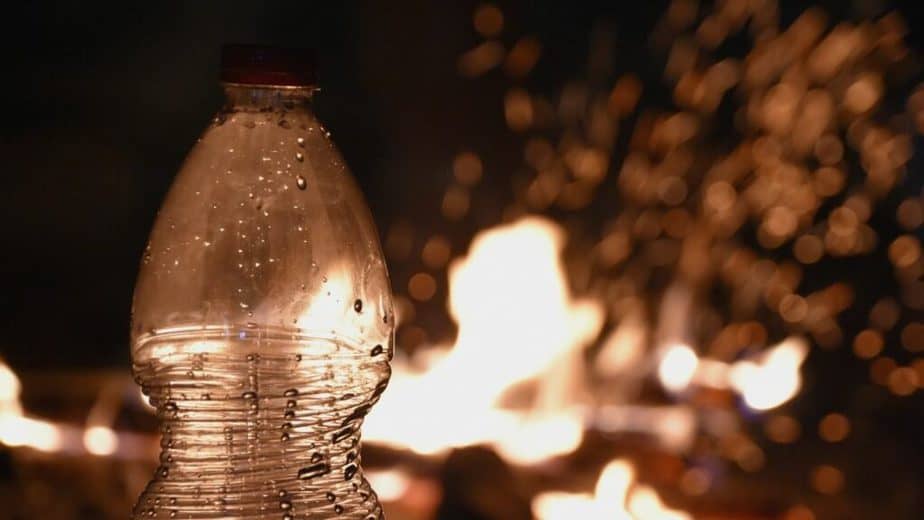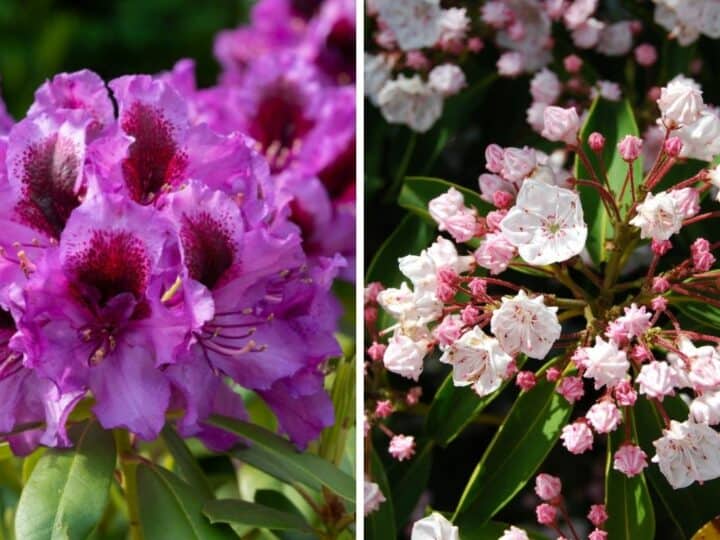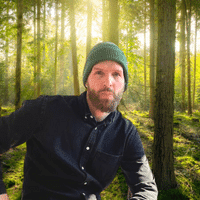Many people who live where rhododendrons and mountain laurel grow have been taught not to burn them. The story is that you should not burn toxic plants.
The poison of some toxic plants will be released by fire and be toxic for you to breathe or be near...
Both rhododendron and mountain laurel are toxic from the tip of their leaves to their roots. However, a temperature over 150 degrees Fahrenheit will destroy the toxins.
The temperature of a medium-sized campfire can reach 900 degrees Fahrenheit.
The toxicity of these plants can be harmful to you, and they can also be toxic to domestic animals and cattle who ingest them.
Nevertheless, burning them will not make you or anyone around the fire sick from their toxins.
If you want to know more about rhododendron and mountain laurel and if they are truly toxic to burn in a campfire, continue reading!
Table of Contents
Are Rhododendron and Mountain Laurel Truly Toxic to Burn in a Campfire?
Rhododendron and mountain laurel contain grayanotoxins (glycosides) which cause gastrointestinal distress and affect the cardiovascular system. But, the only way the toxin can affect you is to eat their leaves or branches. Hence, burning Rhododendron or mountain laurel actually destroys the toxin.
What Toxins Do Rhododendron and Mountain Laurel Have
The toxin in both of these plants is grayanotoxins (glycosides). This toxin will irritate the digestive system of humans, pets, and livestock if ingested.
However, you would need to eat two percent of your body weight to have a noticeable effect.
So, even though the toxins in rhododendron and mountain laurel are poisonous, it is not likely to harm you if you ingest a small amount of it or burn it.
However, like all toxins, some people can have an allergic reaction to grayanotoxins, may know it, and may not.

Grayanotoxins are neurotoxins. This toxin can affect much more than your digestive system.
As with all chemicals, they affect us differently, so it is best to avoid intentionally or accidentally consuming Rhododendron in any form.
If you have sensitive skin, touching any part of a rhododendron or mountain laurel may irritate you. If your backyard has these plants and you need to trim them, use gloves.
As for burning rhododendron and mountain laurel, the heat of a fire will render the chemicals harmless.
Other Woods That are Toxic when Burned in a Campfire
Campfires don’t always occur in the woods. Don’t use the scrap leftover from building the deck if you make a campfire in your backyard.
If it is pressure treated, the smoke coming from the burnt materials can be toxic.
Tossing plastic and other toxic items into a campfire is a no, no, too. It may melt, but the residual waste will be right where it melts, and the smoke from the plastic can be toxic, too.

It may be cheating, but many hunters and campers take their firewood with them when they camp.
Leaving it to nature to leave you enough surplus lying on the forest floor may not be the best way to approach having fuel for a campfire.
What Else Should I Not Burn When I Have a Campfire Going
Ensure that any wood you find in the forest doesn’t have poison ivy or poison oak growing on its bark.
Wood from the oleander tree and the hemlock are also poisonous to burn in a campfire, as well as other types of wood you should not burn.
Don’t burn any trash in your campfire unless it is paper or wood. You need to take any plastic and metal away from a campsite and dispose of it elsewhere.
Besides being toxic, plastic and metal are trash, and they, along with any other waste you produce, should leave the woods when you do.
Honey Made from Rhododendron and Mountain Laurel is called “Mad Honey”
The toxin in Rhododendron and mountain laurel is a deterrent to insects; however, the honeybee doesn’t seem to notice.
Since bees have no problem with grayanotoxins in the blooms of these plants, it gets transferred to any honey they produce, and that’s not good!
The consumption of honey made from the flowers of rhododendron and mountain laurel can be as toxic as eating the plant.
Mad honey can cause symptoms of intoxication, atrial-ventricular blockage, and hypotension.
Frequently Asked Questions about Burning Rhododendron and Mountain Laurel in a Campfire
Can the toxins from Rhododendron and mountain laurel poison my skin?
If you have sensitive skin, the sap from a flower or branch may cause discomfort.
What plants are poisonous to burn?
Poison oak, sumac, and hemlock can be poisonous when burned. Although not cut for firewood, make sure none clings to the firewood you use.
Is Burning Rhododendron and Mountain Laurel Unsafe
Although it is safe to burn, handling it with your bare hands may not be safe.
Also, rhododendron and mountain laurel are bushes, and any wood you use from them won’t last long as a fire. However, they may work fine to start a fire if you can find deadwood.
The old tale that Rhododendron, and mountain laurel, cannot be burned likely came about because the plant itself is poisonous. Therefore, the smoke would be poisonous, too.
However, the sap and toxins in Rhododendron and mountain laurel are different than the oily excretion of poison oak, sumac, and hemlock, which are poisonous and can’t be burned, and neither can oleander.
Be mindful about what materials you burn in your campfire.
Dry hardwood produces the longest-lasting, hottest fire, so forego the rhododendron and mountain laurel if at all possible.

